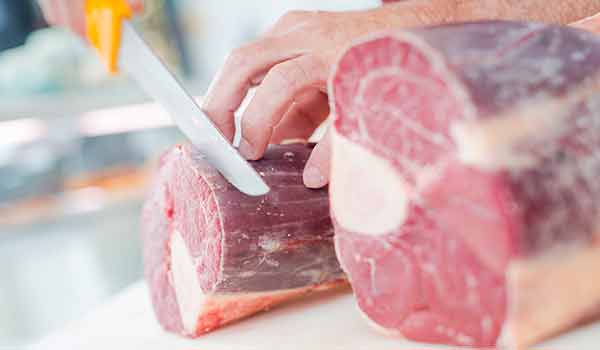People like to experiment with the fashionable diet of the moment for various health or ethical reasons – be it Keto, Paleo, or FODMAP. We like to put our dogs on various different diets as well. The raw diet for dogs has surged in popularity lately – but is it safe?
Where Does The Raw Diet For Dogs Originate?
The earliest ancestors of dogs would have eaten what they could catch or scavenge, supplemented with some vegetable matter. Early domesticated dogs would have also had whatever offal, bones and table leftovers our human ancestors gave them.
As human society developed, commercial dog food became the most convenient way to feed our pets. Top-quality commercial food can be perfectly adequate for most domestic pets, but some brands are packed with low-nutrition filler like bread and corn. They can also be chock-full of preservatives. It’s no surprise that some pet owners think they can do better for their loyal fuzzy friends!
In the early 90s, veterinarian Dr Ian Billinghurst formulated the somewhat oddly-named BARF diet – which stands for Biologically Appropriate Raw Food. It’s basically just meat, bone, organs, and eggs, with some raw produce thrown in. It’s pretty much what wolves would have eaten, except we don’t expect our domestic pets to hunt and kill their own food.
What Are The Cons Of A Raw Diet For Dogs?
There is a lot of debate about a homemade raw diet, with many vets and experienced dog owners advising against it. The main reason is because raw food can become contaminated if not stored or transported correctly. Parasites or diseases are dangerous for your doggoes’ health and wellbeing.
Many veterinarians recommend against homemade raw diets due to the risk of contamination from parasites or bacteria. Handling and feeding of raw meat containing bacteria like salmonella or listeria can be dangerous if the people around you are very young, very old, or otherwise immunocompromised.
If you have a trusted butcher who supplies only the freshest and best-quality meat, you’re in a great position to give your pet a raw diet. However, this can be pretty expensive, and inconvenient if you have to travel to your preferred meat supplier on the reg.

Other options are provided by companies who prepare raw meals and deliver them to you fresh, frozen or freeze-dried. This is way more convenient for pet owners – but again, it can be expensive, and not easy to manage unless you have a lot of freezer space!
If you’re planning on feeding your dog a raw diet and nothing else, check with your vet about dietary completeness. This is the best way to make sure your dog is getting all the nutrients they need. Some extra supplements might be necessary.
Related: Why Does Your Husky Eat Poop, and What Can You Do About It?
Another downside to feeding your dog exclusively on raw meat is that they might become “spoiled”, and refuse commercial dog food if it’s offered. And if you’re away from home, any dog sitters will need to be prepared to handle your pooch’s raw meat diet.
What Are The Pros Of A Raw Diet For Your Dogs?
The main advantage feeding your Husky a raw diet is that you know exactly what’s in his or her food. You don’t need to worry about all those additives in some commercial dog foods. This is a great option for dogs with allergies or other medical issues affected by diet.
For pet owners who have ethical concerns about different food types, the most conscientious and environmentally friendly raw diet out there is free-range organic venison. This is meat from animals who live wild in game reserves or parks, and are culled humanely to control their populations – thus eliminating factors like factory farming and slaughterhouses. The environmental footprint of this kind of food “production” is as minimal as it could be.
Some dog owners and breeders tout a raw diet as a magical cure for almost all health issues, food aggression, and behavioural problems. This is, of course, to be taken with a big pinch of salt. However, it’s no surprise that dogs will do well on a diet that’s as close to what they’re designed to eat as possible.
If you’re the kind of pet owner who likes to delve into the scientific research surrounding doggy nutrition, it’s possible to change the levels of macronutrients in your pets’ diet to account for different environmental factors – like the onset of winter. Not to worry if this kind of knowledge is a little above your head, however – most of us are in the same boat! Vets and other animal professionals will be able to assist you with getting the balance right.

Now that you’re armed with more information about the raw diet for Huskies, you can weigh up whether any risks or inconveniences are worth it for you. It’s important not to feel guilty if this kind of feeding is not manageable for you – many pet dogs thrive on a diet of commercial dog food, with the occasional top-quality raw steak, chicken or mince treat thrown in.
Just like humans, our closest furry friends are very adaptable – so find a balanced diet that works with your resources, add lots of patience and love, read our many Naughty Husky care and feeding tips, and you can’t go wrong!


